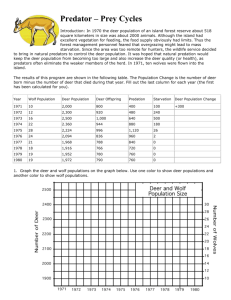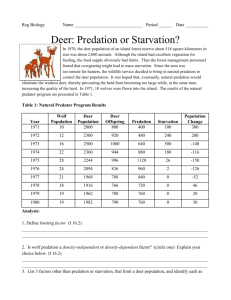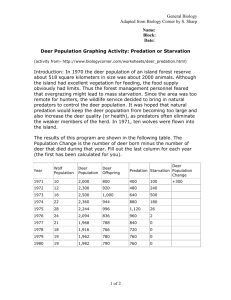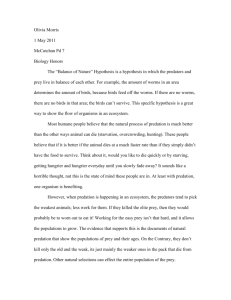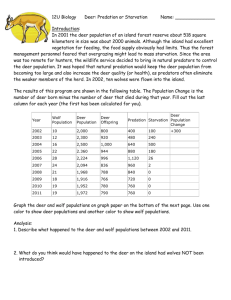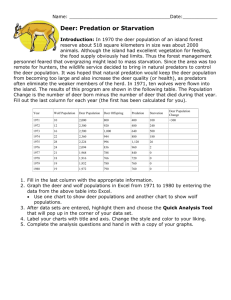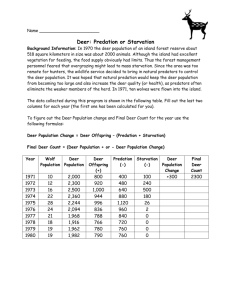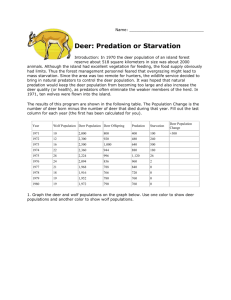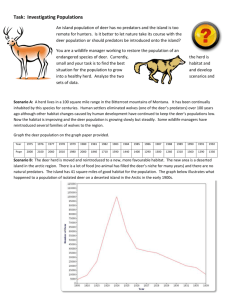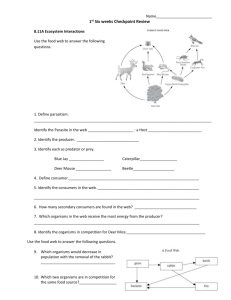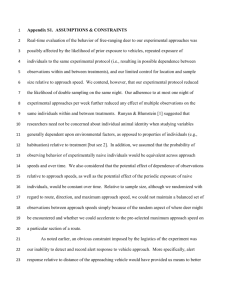Predator-Prey Dynamics: Ecosystem Activity
advertisement
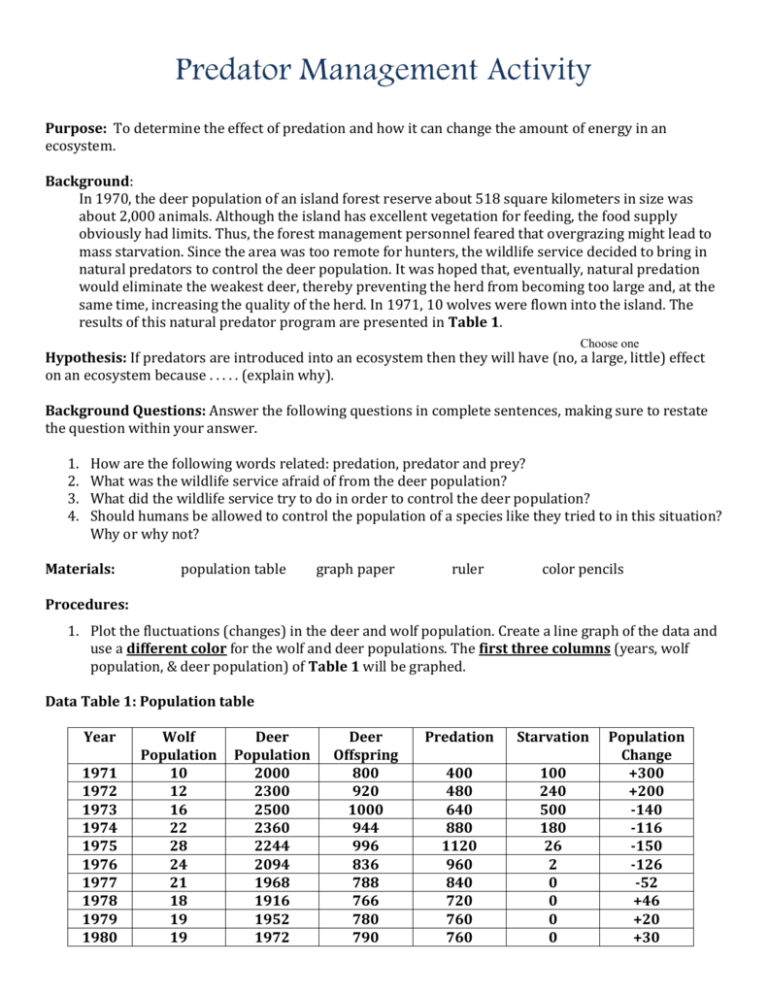
Predator Management Activity Purpose: To determine the effect of predation and how it can change the amount of energy in an ecosystem. Background: In 1970, the deer population of an island forest reserve about 518 square kilometers in size was about 2,000 animals. Although the island has excellent vegetation for feeding, the food supply obviously had limits. Thus, the forest management personnel feared that overgrazing might lead to mass starvation. Since the area was too remote for hunters, the wildlife service decided to bring in natural predators to control the deer population. It was hoped that, eventually, natural predation would eliminate the weakest deer, thereby preventing the herd from becoming too large and, at the same time, increasing the quality of the herd. In 1971, 10 wolves were flown into the island. The results of this natural predator program are presented in Table 1. Choose one Hypothesis: If predators are introduced into an ecosystem then they will have (no, a large, little) effect on an ecosystem because . . . . . (explain why). Background Questions: Answer the following questions in complete sentences, making sure to restate the question within your answer. 1. 2. 3. 4. How are the following words related: predation, predator and prey? What was the wildlife service afraid of from the deer population? What did the wildlife service try to do in order to control the deer population? Should humans be allowed to control the population of a species like they tried to in this situation? Why or why not? Materials: population table graph paper ruler color pencils Procedures: 1. Plot the fluctuations (changes) in the deer and wolf population. Create a line graph of the data and use a different color for the wolf and deer populations. The first three columns (years, wolf population, & deer population) of Table 1 will be graphed. Data Table 1: Population table Year 1971 1972 1973 1974 1975 1976 1977 1978 1979 1980 Wolf Population 10 12 16 22 28 24 21 18 19 19 Deer Population 2000 2300 2500 2360 2244 2094 1968 1916 1952 1972 Deer Offspring 800 920 1000 944 996 836 788 766 780 790 Predation Starvation 400 480 640 880 1120 960 840 720 760 760 100 240 500 180 26 2 0 0 0 0 Population Change +300 +200 -140 -116 -150 -126 -52 +46 +20 +30 1800 1900 2000 2100 2200 2300 2400 2500 2600 30 Key: Wolf Population Deer Population 25 Wolf Population 20 15 Deer population Graphing Set-up: The graph that you set-up should be similar to the one below. Remember to stay on “TASK” when creating your graph. 10 5 1971 72 73 74 75 76 77 78 79 1980 Year Analysis Questions: Answer the following questions in complete sentences, restating the question within your answer. 1. Would it have been better for the ecosystem if more wolves had been introduced in 1971? Why? 2. Explain why the wolf population declined after 1975. 3. In which year was deer starvation greatest? Using the data presented and knowledge of ecology, explain why so many deer died. 4. No deer’s died of starvation from 1977 to 1980. Why? 5. How does the size of the deer population influence the number of wolves on the island if no hunting is allowed, what natural mechanisms will control the wolf population? 6. About how many wolves are needed to keep the deer population around 2000? Explain your answer with information from Table 1.

